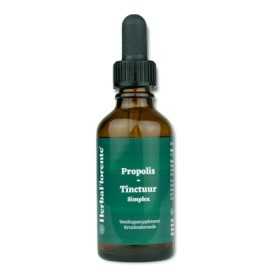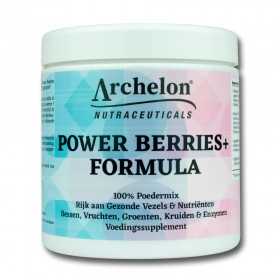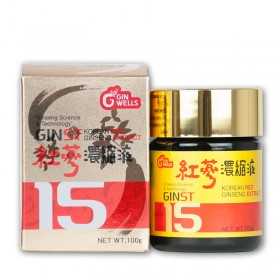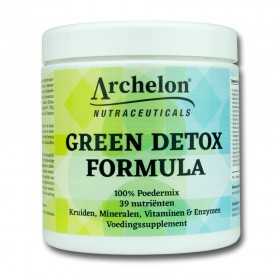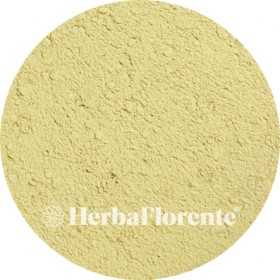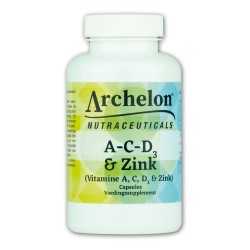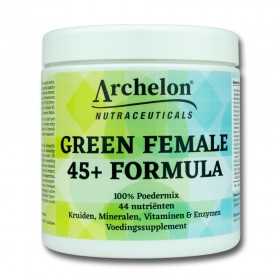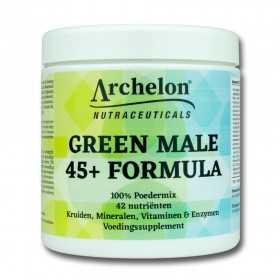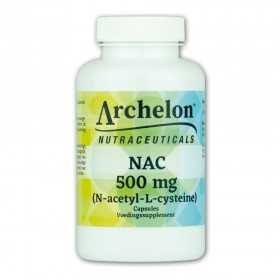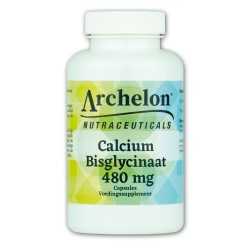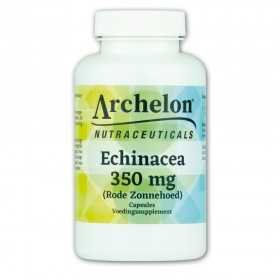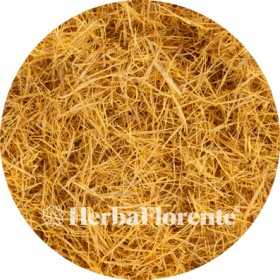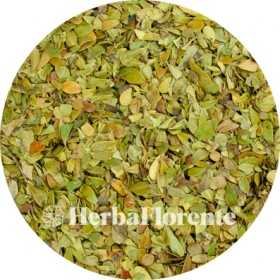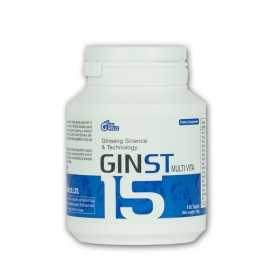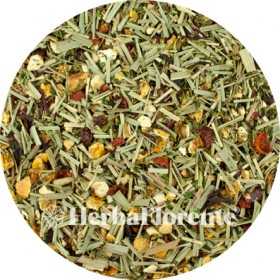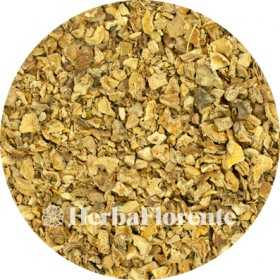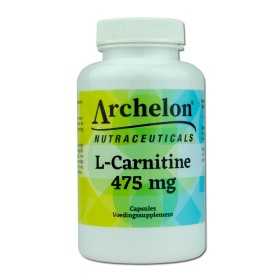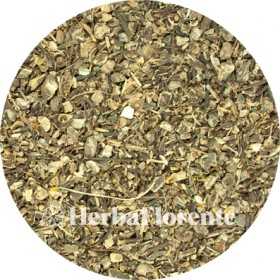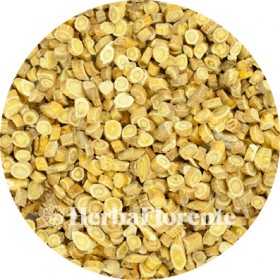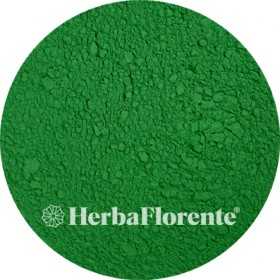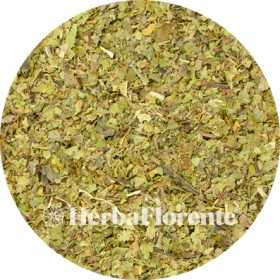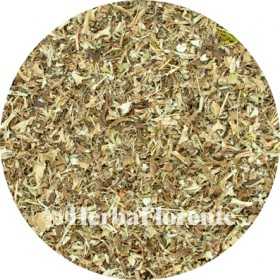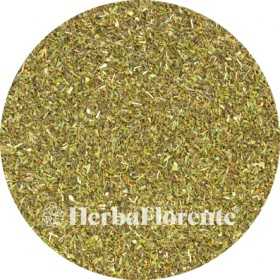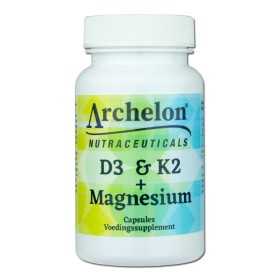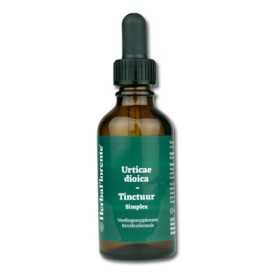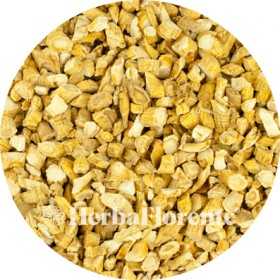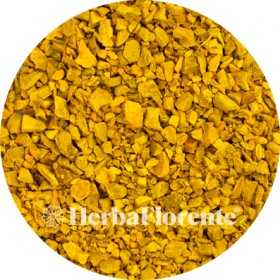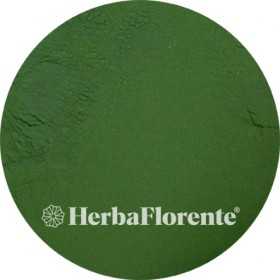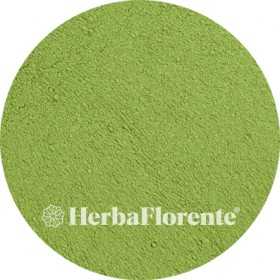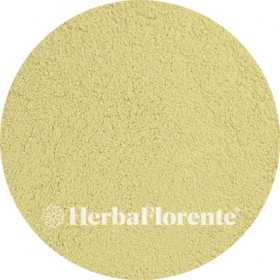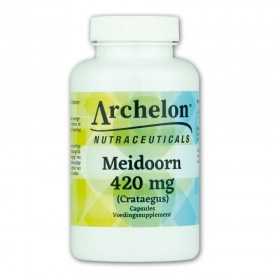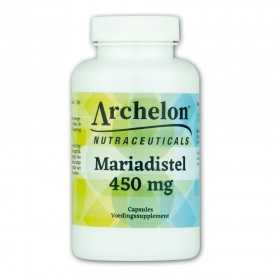Best sellers
There are 366 products.
Bearberry - Arctostaphylos uva-ursi - Cut
The bearberry (Arctostaphylos uva-ursi) is a plant from the heather family (Ericaceae). The Dutch name "bearberry" refers to the assumption that bears would be fond of the fruits of this plant.
The scientific name Arctostaphylos uva-ursi is a tautological mixture of Greek and Latin. The Greek 'arktos' and the Latin 'ursus' both mean "bear", while 'staphyle' and 'uva' both mean "grape".
This plant is known for its supportive effect on the urinary tract. As early as the thirteenth century, bearberry was mentioned in herbal books and praised for its beneficial effects on the bladder.
The scientific name Arctostaphylos uva-ursi is a tautological mixture of Greek and Latin. The Greek 'arktos' and the Latin 'ursus' both mean "bear", while 'staphyle' and 'uva' both mean "grape".
This plant is known for its supportive effect on the urinary tract. As early as the thirteenth century, bearberry was mentioned in herbal books and praised for its beneficial effects on the bladder.
€2.40
From: €2.40
ILHWA GINST15 Multi-Vita - 180 tabl.
The most complete multi-vitamins through the addition of GINST15 extract and FBCx. With GINST15, the ginsenosides are 15x better absorbed into the blood and absorption is 4x faster than with regular ginseng! For example, if you take the standard ginseng, it will take longer than 12 hours for your body to fully absorb it, with the GINST15 extract this takes a maximum of 3 to 4 hours!
FCBx is a fat binder that reduces the fat intake after a meal. Great for a diet and general health.
Multivitamin with GINST15 Ginseng extract and FBCx, a fat binder to reduce fat intake after a meal. Great for diet and general health.
FCBx is a fat binder that reduces the fat intake after a meal. Great for a diet and general health.
Multivitamin with GINST15 Ginseng extract and FBCx, a fat binder to reduce fat intake after a meal. Great for diet and general health.
€32.30
Citrus Blend Herbal Tea
Herbal tea composed of various herbs
Delicious for every moment
Delicious for every moment
€3.95
Cat's Claw - Uncaria tomentosa - Cut
Cat's claw (Uncaria tomentosa) is a climbing plant that is native to the Amazon region of Brazil and Peru. It is highly valued in the Peruvian Amazon and is among the protected species. This plant is often called the 'sacred herb of the rainforest' because of its significance. The name 'cat's claw' or 'cat's claw' is derived from the small claw-like thorns at the base of the leaves, which resemble a cat's claws. These claws help the vine to wrap itself around trees and climb up to a hundred meters high!
€2.20
From: €2.20
Devil's Claw - Harpagophytum procumbems
The devil's claw (Harpagophytum procumbens) gets its name from the claw-like spines that cover the fruits. The name is derived from the Greek word 'harpagos', meaning 'anchor', which refers to the shape of the plant. The plant grows mainly in the Kalahari Desert, which extends across parts of Namibia, Botswana and South Africa. A distant relative of the sesame plant, the devil's claw blooms with beautiful red to purple trumpet-shaped flowers. The medicinal properties of devil's claw are located underground, in the tubers and roots. The plant is known for its beneficial effect on digestion and promoting flexible joints.
€2.60
From: €2.60
L-Carnitine - 475 mg
L-Carnitine is often considered an amino acid because of its similar molecular structure. The body uses carnitine for fat burning and as an energy source for the heart muscle. Athletes and people who train intensively often need extra carnitine.
Men generally have a higher need for carnitine than women. L-carnitine is closely related to the B vitamins. The word 'carnitine' comes from the Latin 'carne', which means 'meat'. Carnitine occurs naturally in meat, while the amount of carnitine in plant foods is negligible. Although the body itself can produce carnitine from lysine and methionine, this production is often insufficient when the need is increased.
Men generally have a higher need for carnitine than women. L-carnitine is closely related to the B vitamins. The word 'carnitine' comes from the Latin 'carne', which means 'meat'. Carnitine occurs naturally in meat, while the amount of carnitine in plant foods is negligible. Although the body itself can produce carnitine from lysine and methionine, this production is often insufficient when the need is increased.
€24.95
Ginkgo (Maidenhair tree) - Ginkgo bilobae - Cut
Maidenhair tree (Ginkgo biloba), also known as the Japanese Temple Tree, has been used in traditional Chinese herbal medicine for centuries. Ginkgo biloba is used to improve blood circulation, promote concentration and support memory. The main components of ginkgo biloba are (bio)flavonoids (flavonglycosides), bilobalides and ginkgolides (terpene lactones).
It is a unique deciduous tree that is considered a species with no direct family ties. Charles Darwin called the ginkgo biloba a 'living fossil' because it has been around for about two hundred and fifty million years. Ginkgo originally comes from China.
It is a unique deciduous tree that is considered a species with no direct family ties. Charles Darwin called the ginkgo biloba a 'living fossil' because it has been around for about two hundred and fifty million years. Ginkgo originally comes from China.
€3.00
From: €3.00
Black Cohosh - Cimicifuga Racemosa
Black cohosh (Cimicifuga racemosa), has been used in North American herbal medicine for centuries. The roots of this plant have been used for centuries by northern Indian tribes, where it is known as "squawroot" (where 'squaw' refers to 'Indian woman'). Black cohosh is best known as an herb specifically aimed at women and is becoming increasingly popular in the Netherlands. It provides support for menopausal symptoms such as hot flashes and irritable feelings.
€9.80
From: €9.80
Astragalus - Astragalus chinensis membranus - Cut
Astragalus, also known as Fleshy Locust (Astragalus membranaceus), is a plant native to Asia. It has been used for 2000 years in traditional Chinese herbal medicine to strengthen the immune system. In addition to this property, astragalus has many other benefits. According to Chinese tradition, it strengthens the life force, or 'qi', as it is called in China, when ingested. It is known as a powerful antioxidant and is especially valued for its ability to support the immune system.
€2.60
From: €2.60
Spirulina - Spirulina platensis
Spirulina, a type of algae, provides support to the immune system through its rich nutrients and relieves fatigue.
The blue-green spirulina is a type of algae that contains both chlorophyll (green pigment) and phycocyanin (blue pigment). These single-celled algae form spiral microscopic strands and thrive in warm, fresh water.
With its abundance of essential nutrients, spirulina is invaluable to our body. It contains more than 60% complete protein, almost three times more than beef, and is rich in vitamin B complex, vitamin E, carotenoids, iron, manganese, zinc and essential fatty acids such as gamma-linolenic acid. With ten different mixed carotenoids, spirulina is the most beta-carotene-rich food known.
The blue-green spirulina is a type of algae that contains both chlorophyll (green pigment) and phycocyanin (blue pigment). These single-celled algae form spiral microscopic strands and thrive in warm, fresh water.
With its abundance of essential nutrients, spirulina is invaluable to our body. It contains more than 60% complete protein, almost three times more than beef, and is rich in vitamin B complex, vitamin E, carotenoids, iron, manganese, zinc and essential fatty acids such as gamma-linolenic acid. With ten different mixed carotenoids, spirulina is the most beta-carotene-rich food known.
€2.50
From: €2.50
Walnut - Juglans regia
The Juglans regia, also known as walnut, walnut or walnut, belongs to the walnut family (Juglandaceae). This species is also known as common walnut or Persian walnut, to avoid confusion with the genus Juglans. Other species in the genus Juglans include the white walnut and the black walnut.
This deciduous tree can reach a height of up to 30 meters with a crown that can be more than 10 meters wide. The leaves are odd-pinnate and can be 25-40 cm long, consisting of five to nine leaflets per compound leaf. The three largest leaflets are located at the end of the leaf and measure 10-18 cm long and 6-8 cm wide. The leaflets at the base of the leaf are smaller, usually 5-8 cm long.
This deciduous tree can reach a height of up to 30 meters with a crown that can be more than 10 meters wide. The leaves are odd-pinnate and can be 25-40 cm long, consisting of five to nine leaflets per compound leaf. The three largest leaflets are located at the end of the leaf and measure 10-18 cm long and 6-8 cm wide. The leaflets at the base of the leaf are smaller, usually 5-8 cm long.
€2.00
From: €2.00
Iceland moss - Cetraria islandicus
Icelandic moss (Cetraria islandica, basionym: Lichen islandicus) is a shrubby lichen belonging to the Parmeliaceae family. This species is extremely rare in the Netherlands and is on the Dutch Red List as critically endangered.
A medicinal effect was attributed to the lichen. It was collected in its entirety for this purpose. Although not known medicinally in ancient times, it did not enter medicine until the 17th century. It was used for rashes, wounds, ulcers and various lung diseases such as bronchitis.
A medicinal effect was attributed to the lichen. It was collected in its entirety for this purpose. Although not known medicinally in ancient times, it did not enter medicine until the 17th century. It was used for rashes, wounds, ulcers and various lung diseases such as bronchitis.
€3.00
From: €3.00
Chicory (Root) - Cichorium Intybus - Cut
Chicory (Cichorium) belongs to the composite family (Compositae or Asteraceae) and includes well-known vegetables such as chicory and endive. It is mainly consumed for health reasons.
Since the late years of the twentieth century, chicory roots have been cultivated not only for chicory, but also for the production of inulin and sweeteners, especially fructose. Both inulin (a dietary fiber) and fructose are widely used in the food industry.
Roasted chicory root is used as a coffee substitute or as an ingredient in coffee brewing. In the past, this was done out of necessity, such as during the Napoleonic blockade during the French occupation.
Since the late years of the twentieth century, chicory roots have been cultivated not only for chicory, but also for the production of inulin and sweeteners, especially fructose. Both inulin (a dietary fiber) and fructose are widely used in the food industry.
Roasted chicory root is used as a coffee substitute or as an ingredient in coffee brewing. In the past, this was done out of necessity, such as during the Napoleonic blockade during the French occupation.
€2.00
From: €2.00
Savory Wort - Satureja hortensis
Savory (Satureja) belongs to the lip flower family (Lamiaceae or Labiatae). The scientific name of savory is derived from 'satyr'. During Roman times, savory was mainly used by the followers of Bacchus. They wore it in wreaths in their hair and used it regularly to increase their potency. Although many herbal books do not mention this, savory is one of the oldest remedies for increasing potency.
In ancient times, the Romans were fond of savory sauce, which was made with vinegar and served with fish and meat dishes in the same way as mint sauce. Most cooks had their own recipes for using savory. They used it in stuffings for veal, in sauces for fish and other dishes, and even in sausages and pork pies.
In ancient times, the Romans were fond of savory sauce, which was made with vinegar and served with fish and meat dishes in the same way as mint sauce. Most cooks had their own recipes for using savory. They used it in stuffings for veal, in sauces for fish and other dishes, and even in sausages and pork pies.
€2.00
From: €2.00
Vitamin D3 - 2,500 IU - 62.5 mcg & (Menaquinone-7) 25 mcg & Magnesium malate 100 mg
Vitamin D is also produced by our skin, but for many this is not sufficient or does not work well. Supplementing with vitamin D is a good solution for this. Vitamin D is important in various processes in the body.
Vitamin K2 in the form of Menaquinone-7 is the most effective form of vitamin K2. It appears to be present in the body for a very long time and can therefore be effective for a long time. Vitamin K contributes to normal blood clotting. Furthermore, vitamin K2 contributes to good bones by supporting calcium absorption.
Magnesium malate is a powerful form of magnesium that is specifically aimed at stimulating physical energy. This mineral is bound to malic acid, an essential part of our energy production.
Vitamin K2 in the form of Menaquinone-7 is the most effective form of vitamin K2. It appears to be present in the body for a very long time and can therefore be effective for a long time. Vitamin K contributes to normal blood clotting. Furthermore, vitamin K2 contributes to good bones by supporting calcium absorption.
Magnesium malate is a powerful form of magnesium that is specifically aimed at stimulating physical energy. This mineral is bound to malic acid, an essential part of our energy production.
€36.95
Nettle Tincture - Urticae dioica Tincture
Single herbal tincture made with dried herb of Urticae dioica (Nettle).
The nettle (Urtica dioica) is a powerful and versatile plant that occurs in many places, despite its irritating property to the touch. Known for its culinary uses, such as nettle soup and tea, the nettle is also known for its health benefits.
Nettle leaf is a traditional herbal medicine with various applications. It contributes to healthy skin, gives shine to the hair and strengthens the nails. In addition, it can help soothe the respiratory tract and maintain proper fluid balance. It also provides support to the heart and blood vessels.
The nettle (Urtica dioica) is a powerful and versatile plant that occurs in many places, despite its irritating property to the touch. Known for its culinary uses, such as nettle soup and tea, the nettle is also known for its health benefits.
Nettle leaf is a traditional herbal medicine with various applications. It contributes to healthy skin, gives shine to the hair and strengthens the nails. In addition, it can help soothe the respiratory tract and maintain proper fluid balance. It also provides support to the heart and blood vessels.
€10.95
Ginseng (Panax) - Ginseng Panax - Cut
Panax Ginseng is a plant with a slow-growing, sturdy root. Panax Ginseng is considered one of the most important medicinal herbs in traditional Chinese medicine. In fact, it is even the world's most famous herb. Panax ginseng has been used for more than 5,000 years to optimize human health and well-being in Asia. In the world of Chinese ethnopharmacology, it has been used for more than 3,000 years.
Panax takes its name from the Greek word “panacea”, which means “all-healer”. Gingsen is currently the world's most popular and most powerful adaptogenic herb. Adaptogenic herbs help the body to deal with stress in a natural way and achieve a homeostatic balance between body and mind.
Panax takes its name from the Greek word “panacea”, which means “all-healer”. Gingsen is currently the world's most popular and most powerful adaptogenic herb. Adaptogenic herbs help the body to deal with stress in a natural way and achieve a homeostatic balance between body and mind.
€16.00
From: €16.00
Tumeric zanth. - Curcumae zanthorrhizae - Cut
Curcuma (also known as Javanese Ginger) (Curcumae zanthorrhizae) is respected worldwide as one of the most valuable spices. It originates in the tropical regions of India and Southeast Asia. The powder of the root is known for its popularity in Asian cuisine and is known in the Netherlands as turmeric, due to its role in coloring curry and mustard.
In addition to its culinary uses, turmeric also offers several health benefits. Curcuma has been used in India for centuries because of its effective effect on flexible joints and intestinal function. It is a powerful antioxidant that benefits the liver and musculoskeletal system, while also aiding digestion.
In addition to its culinary uses, turmeric also offers several health benefits. Curcuma has been used in India for centuries because of its effective effect on flexible joints and intestinal function. It is a powerful antioxidant that benefits the liver and musculoskeletal system, while also aiding digestion.
€2.00
From: €2.00
Chlorella - Chlorella
Chlorella, a single-celled green algae belonging to the green algae family, thrives in lakes and rivers of Southeast Asia. This microscopic organism is a veritable treasure trove of nutrients, including proteins, vitamins, trace elements and omega-3 fatty acids.
Its versatility is reflected in supporting the immune system and promoting liver detoxification. Chlorella also contributes to healthy digestion and supports normal intestinal function. The name 'chlorella' has its origins in the Greek words 'chloros' and 'ella', which mean 'green' and 'small' respectively.
Its versatility is reflected in supporting the immune system and promoting liver detoxification. Chlorella also contributes to healthy digestion and supports normal intestinal function. The name 'chlorella' has its origins in the Greek words 'chloros' and 'ella', which mean 'green' and 'small' respectively.
€4.60
From: €4.60
Nettle - Urticae dioica
The nettle (Urtica dioica) is a powerful and versatile plant that occurs in many places, despite its irritating property to the touch. Known for its culinary uses, such as nettle soup and tea, the nettle is also known for its health benefits.
Nettle leaf is a traditional herbal medicine with various applications. It contributes to healthy skin, gives shine to the hair and strengthens the nails. In addition, it can help soothe the respiratory tract and maintain proper fluid balance. It also provides support to the heart and blood vessels.
Nettle leaf is a traditional herbal medicine with various applications. It contributes to healthy skin, gives shine to the hair and strengthens the nails. In addition, it can help soothe the respiratory tract and maintain proper fluid balance. It also provides support to the heart and blood vessels.
€2.40
From: €2.40
Ashwagandha - Withania somnifera
In Ayurvedic medicine, ashwagandha is known as a 'rasayana', meaning it is used to support both physical and mental health. It has a calming effect and is used to sleep better and promote a balanced mind. In India, where this herb originates, it is believed to support male potency and female health, often compared to the strength and vitality of a horse.
€4.40
From: €4.40
Hawthorn (Crataegus) - 420 mg
The two-stemmed hawthorn (Crataegus laevigata) is a natural source of beneficial substances. The flowers, leaves and to a lesser extent the berries of the hawthorn contain a rich variety of components, including flavonoids, procyanidins, vitamin C, tannins, glycosides and antioxidants. These substances have beneficial effects on the heart and contribute to a healthy lifestyle. Hawthorn is known for its calming properties and supports natural, deep sleep.
€19.95
Milk Thistle - 450 mg
Milk thistle (Silybum marianum), also known as milk thistle or milk thistle, is a spiny plant native to the Mediterranean region, but which also grows in our area. It belongs to the composite family. Milk thistle has been used for centuries as a natural remedy to support liver and bile function. It can be used as part of a cleansing regimen to assist the liver in the detoxification process.
The seeds of milk thistle contain silymarin, a powerful antioxidant. Silymarin stimulates the liver in the natural detoxification process and thus supports liver function.
The seeds of milk thistle contain silymarin, a powerful antioxidant. Silymarin stimulates the liver in the natural detoxification process and thus supports liver function.
€17.95
Green Detox Formula
Discover the power of Green Detox Formula, the ultimate 30-day detox treatment that breathes new life into your body. This powerful detox treatment is composed of a therapeutic formula that contains no less than 39 nutrients, including a balanced mix of herbs, minerals, vitamins and enzymes.
Each daily dose of Green Detox Formula is designed to support the body's natural cleansing process, while providing essential nutrients needed for optimal health.
Each daily dose of Green Detox Formula is designed to support the body's natural cleansing process, while providing essential nutrients needed for optimal health.
€62.50

